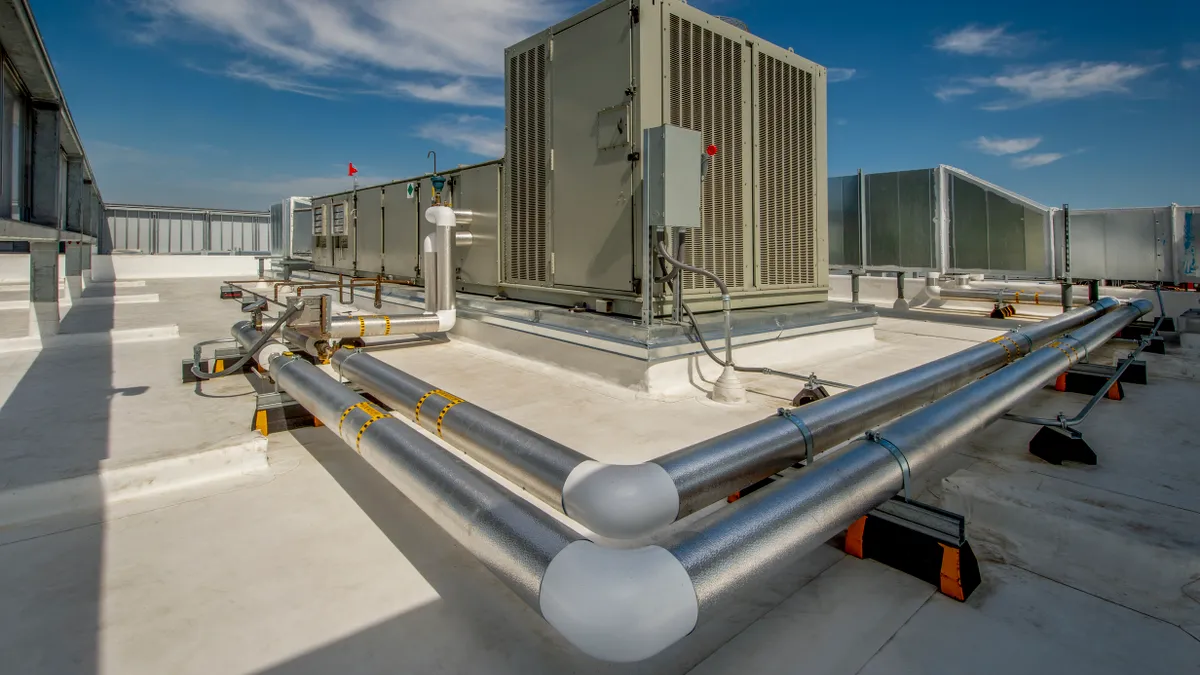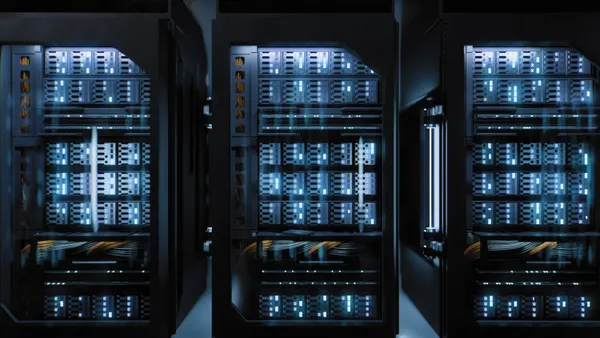Bob Hinkle is founder and executive chairman at Metrus Energy.
Efficiently cooling a warming planet shouldn’t be viewed as a trick knot but rather a Gordian knot — a complex problem that can appear unsolvable. As all types of businesses fret, and sweat, the challenges of adapting work, school and caregiving on a too hot planet, we quickly take note that the summer of 2023 was the hottest on record — and there is an imminent need to invest more in cooling. The heat waves, heat domes and heat-supercharged hurricanes are increasing in number and intensity with each passing year.
Not surprisingly, data from the International Energy Agency reveals that electricity demand for space cooling could increase by 40% by 2030. This surge in demand is across all market sectors and represents a major environmental concern since greenhouse gas emitting cooling systems contribute to climate change and put pressure on the already overburdened utility grid. Cooling systems are also capital-intensive investments so many businesses, schools and hospitals either push off required upgrades or, in a pinch, install less clean and less efficient equipment.
So, how to cut through this Gordian knot? It is simple, if not easy. On a massive scale, we need third-party private sector financing solutions and targeted funding from international development and government agencies to spur investment in higher efficiency (lower GHG emitting) cooling equipment.
Directing a mix of private and public sector financing to meet the surge in demand is essential to get the right types of cooling projects underway now. Many existing cooling systems are inefficient which contributes to direct and indirect emissions from the electricity and natural gas consumption of chillers and other HVAC equipment. These same systems can also rely on high global warming potential refrigerants, such as R-22, a widely used HCFC, which further add to GHG emissions.
Emissions from air conditioning and refrigeration are expected to rise by 90% compared to 2017 levels. Most HVAC equipment utilized today is two to three times less efficient than the best available cooling technology. Transitioning quickly to best-in-class equipment like electric chillers, waste heat recovery chillers and heat pumps can mitigate the environmental impact of cooling, particularly in areas with a low carbon electricity grid.
The investment decisions made by schools, hospitals and businesses on cooling systems over the next few years will dictate our collective ability to prevent the worst effects of climate change. Take schools, for instance. The United States is not alone, but the majority of American schools weren’t built for this heat and can’t possibly fund cooling projects themselves. A 2021 study by the Center for Climate Integrity identified more than 13,700 public schools that have installed — or will need to install — HVAC systems by 2025. And the total estimated cost? It is over $40 billion.
Then there is the surging refrigeration need of the pharmaceuticals sector — the second fastest-growing user of industrial cooling in the U.S. When sector-by-sector investments in cooling are added together it tracks with the Economist Intelligence Unit estimates that the annual required global investment in cooling will be $170 billion by 2030.
Four key factors
This clarion call for climate positive investing in efficient and clean cooling is based on four key factors. First, chillers and HVAC-related equipment have a long useful life that spans decades. What we finance and install today will be around for a long time. Second, cooling systems represent a major share of a building’s total energy use and corresponding GHG emissions. For many customers, achieving their net zero target will be predicated on first upgrading to a cleaner and more efficient cooling system. Third, replacing cooling equipment requires significant capital outlay that many businesses don’t have. This can result in the avoidance or delay of required upgrades or even waiting until a system fails outright. Fourth, new regulations and standards at the federal, state and global level are already beginning to mandate efficient and clean cooling.
This regulatory shift is already underway. In 2023, the U.S. Department of Energy updated standards for new commercial air conditioning and heat pump equipment requiring an additional 15% efficiency increase from previous ratings set in 2018. At the state level, California, New York and Washington are all debating natural gas bans which will likely require new investment in electricity-based cooling systems. Last, but not least, the U.S. ratified the Kigali Amendment in 2022, joining 137 other countries in calling for a phase down of the consumption and production of hydrofluorocarbons — potent greenhouse gases commonly used as refrigerants in cooling systems.
Changing the financing paradigm, however, is central to getting the right types of cooling projects done. The energy efficiency and energy performance contracting industry tried, with limited success, to economically justify cooling projects based solely on energy savings. This approach is problematic since the simple payback period on cooling upgrades (i.e., total upfront cost divided by annual energy savings) is often 30 years or more. The result is that critical upgrades go undone, and financing solutions omit the environmental, operational and resiliency benefits from higher efficiency cooling solutions. Enter a new wave of public and private financing solutions that have the flexibility to tackle the myriad of cooling applications required by different businesses.
Public sector funding from government agencies, international financial institutions and green banks is critical. One promising front is the use of blended finance structures. Blended finance involves the tailored use of funding — equity or debt — from development-oriented agencies to mobilize private investment to achieve broader sustainability goals, including clean and efficient cooling. This includes taking first loss equity positions in projects or providing debt funding for challenging customer credits and/or country risk.
The overarching objective is to deploy the development-oriented funds in a targeted manner that mobilizes private sector investment, thereby increasing the total available pool of funding resources. Blended finance can include direct equity investment, loan loss reserve funds, cooling bonds and debt. Groups like the World Bank and Organization for Economic Cooperation and Development are utilizing blended finance to advance projects in developing countries. In the U.S., regional (state-level) green banks can be a blended finance solution to pursue added cooling upgrades.
For the private sector, Energy as a Service, or EaaS, is an effective third-party financing solution that has been utilized for energy efficiency and renewable energy and is rapidly gaining traction globally. Recent reports by the United Nations Environment Program, International Energy Agency, and the Cool Coalition highlight EaaS since it funds 100% of the upfront cost of projects and has the flexibility to set service charges paid by customers on the available cooling capacity or the volume and quality of cooling that is delivered to a facility.
One tangible convergence of public and private sector action that could have a huge positive impact is the Global Cooling Pledge that will be announced at COP28. This first of a kind pledge will call on countries, corporations and financers to commit to investing capital and expanding access to sustainable cooling approaches. Text in the current draft of the pledge calls for countries to reduce their emissions from cooling by at least 68% by 2050, compared to a 2022 baseline. We have the technology, we have the financing tools, and we have the critical need for efficient and clean cooling. Let’s get to work.






















